Assessment of the Accumulation Characteristics of Pollutants in the Soil of Permeable Pavement and the Risk of Heavy Metal Pollution Based on the Simulated Rainfall Experiment
Abstract
1. Introduction
2. Materials and Methods
2.1. Materials
2.2. Experimental System
2.3. Rainfall Simulation Experiment
2.4. Test Sampling Method
2.5. Detection and Evaluation Methods of Soil Pollutants
2.6. Statistical Analysis Methods for Regression Models
3. Results and Analysis
3.1. N and P Accumulation Characteristics
3.2. The Evaluation of N and P Pollution Characteristics
3.3. The Characteristics of Heavy Metal Accumulation
3.4. The Assessments of Heavy Metal Pollution Characteristics
3.4.1. Nemerow Comprehensive Index Method
3.4.2. Potential Ecological Analysis Method
3.4.3. Geoaccumulation Index Method
4. Conclusions
Author Contributions
Funding
Institutional Review Board Statement
Informed Consent Statement
Data Availability Statement
Conflicts of Interest
References
- Maniquiz-Redillas, M.C.; Kim, L.-H. Evaluation of the capability of low-impact development practices for the removal of heavy metal from urban stormwater runoff. Environ. Technol. 2016, 37, 2265–2272. [Google Scholar] [CrossRef]
- Zhao, C.; Wang, C.-C.; Li, J.-Q.; Wang, P.; Ou, J.-Q.; Cui, J.-R. Interactions between copper (II) and DOM in the urban stormwater runoff: Modeling and characterizations. Environ. Technol. 2018, 39, 120–129. [Google Scholar] [CrossRef] [PubMed]
- Tan, K.; Wang, J. Substrate modified with biochar improves the hydrothermal properties of green roofs. Environ. Res. 2023, 216, 114405. [Google Scholar] [CrossRef] [PubMed]
- Luo, H. Study on Ecological Control Technology and Mechanism of Stormwater Runoff. Ph.D. Thesis, Nanjing Forestry University, Nanjing, China, 2021. (In Chinese). [Google Scholar]
- Taheri, P.; Moghaddam, M.R.A.; Piadeh, F. Sustainability assessment of low-impact development methods for urban stormwater management: A multi-criteria decision-making approach. Sustain. Cities Soc. 2025, 118, 106025. [Google Scholar] [CrossRef]
- Dietz, M.E. Low impact development practices: A review of current research and recommendations for future directions. Water Air Soil Pollut. 2007, 186, 351–363. [Google Scholar] [CrossRef]
- Xiao, F.; Qin, H.; Sun, T. Effects of low impact development on runoff pollution and water quality resilience in an urbanized estuary area. J. Hydrol. 2024, 644, 132129. [Google Scholar] [CrossRef]
- Mullaney, J.; Lucke, T.; Trueman, S.J. The effect of permeable pavements with an underlying base layer on the growth and nutrient status of urban trees. Urban For. Urban Green. 2015, 14, 19–29. [Google Scholar] [CrossRef]
- Raimondi, A.; Marrazzo, G.; Sanfilippo, U.; Becciu, G. A probabilistic approach to stormwater runoff control through permeable pavements beneath urban trees. Sci. Total Environ. 2023, 905, 167196. [Google Scholar] [CrossRef]
- Li, T.; Song, X.; Ding, X.; Wang, Y.H. Preliminary research on hydrodynamic process of sponge permeable pavement. South-North Water Transf. Water Sci. Technol. 2023, 20, 1220–1230. [Google Scholar]
- Cao, H.; Li, H.; Zhang, Z.; Zhang, Z.Y.; Bai, X.J. Construction Waste Recycled Aggregate for Heavy Metals Removal inPermeable Pavement. China Water Wastewater 2023, 39, 126–133. [Google Scholar] [CrossRef]
- Tota-Maharaj, K.; Scholz, M. Efficiency of permeable pavement systems for the removal of urban runoff pollutants under varying environmental conditions. Environ. Prog. Sustain. Energy 2010, 29, 358–369. [Google Scholar] [CrossRef]
- Liu, J.; Yan, H.; Liao, Z.; Zhang, K.; Schmidt, A.R.; Tao, T. Laboratory analysis on the surface runoff pollution reduction performance of permeable pavements. Sci. Total Environ. 2019, 691, 1–8. [Google Scholar] [CrossRef] [PubMed]
- Drake, J.; Bradford, A.; Van Seters, T. Winter effluent quality from partial-infiltration permeable pavement systems. J. Environ. Eng. 2014, 140, 04014036. [Google Scholar] [CrossRef]
- Nsenga Kumwimba, M.; Zhu, B.; Wang, T.; Muyembe, D.K. Distribution and risk assessment of metals and arsenic contamination in man-made ditch sediments with different land use types. Environ. Sci. Pollut. Res. 2016, 23, 24808–24823. [Google Scholar] [CrossRef] [PubMed]
- CJJ/T 188-2012; Technical Specification for Pavement of Water Permeable Brick. China Architecture & Building Press: Beijing, China, 2012.
- CJJ/T 190-2012; Technical Specification for Permeable Asphalt Pavement. China Architecture & Building Press: Beijing, China, 2012.
- Lin, Z.-Z.; Chen, H.-M.; Yang, H. The potential pollution risk of groundwater by a ceramic permeable brick paving system. Water Air Soil Pollut. 2020, 231, 356. [Google Scholar] [CrossRef]
- GB 15618-2018; Soil Environmental Quality-Risk Control Standard for Soil Contamination of Agricultural Land. National Standard of the People’s Republic of China: Beijing, China, 2009.
- Jiang, W.; Sha, A.; Xiao, J.; Li, Y.; Huang, Y. Experimental study on filtration effect and mechanism of pavement runoff in permeable asphalt pavement. Constr. Build. Mater. 2015, 100, 102–110. [Google Scholar] [CrossRef]
- Razzaghmanesh, M.; Borst, M. Long-term effects of three types of permeable pavements on nutrient infiltrate concentrations. Sci. Total Environ. 2019, 670, 893–901. [Google Scholar] [CrossRef]
- Van Meter, K.J.; Basu, N.B.; Veenstra, J.J.; Burras, C.L. The nitrogen legacy: Emerging evidence of nitrogen accumulation in anthropogenic landscapes. Environ. Res. Lett. 2016, 11, 035014. [Google Scholar] [CrossRef]
- Wang, H.; Luo, H.; Yang, J.; Qin, T.; Yang, M.; Chen, L.; Liu, M.; He, B.-J. Pollutant accumulation characteristics of substrates and mechanism of microbial action in different ecological ditches. Environ. Technol. 2025, 46, 651–667. [Google Scholar] [CrossRef]
- Wang, S.; Chen, J. Study on the integrated distribution coefficient of ammonium N migration in layered soil. Environ. Sci. Pollut. Res. 2020, 27, 25340–25352. [Google Scholar] [CrossRef]
- Bingcong, F.; Ma, J.; Liu, Y.; Zhang, X.; Chen, Y.; Liping, W. Research progress of nitrogen transport and transformation in farmland soils. J. Agric. Resour. Environ. 2025, 42, 277. [Google Scholar]
- Hu, R.; Wang, X.-P.; Xu, J.-S.; Zhang, Y.-F.; Pan, Y.-X.; Su, X. The mechanism of soil nitrogen transformation under different biocrusts to warming and reduced precipitation: From microbial functional genes to enzyme activity. Sci. Total Environ. 2020, 722, 137849. [Google Scholar] [CrossRef] [PubMed]
- Scholz, M.; Grabowiecki, P. Review of permeable pavement systems. Build. Environ. 2007, 42, 3830–3836. [Google Scholar] [CrossRef]
- Bao, W.; Zhu, S.; Guo, S.; Wang, L.; Huang, S.; Fu, J.; Ye, Z. Particle size distribution mathematical models and properties of suspended solids in a typical freshwater pond. Environ. Pollut. 2018, 241, 164–171. [Google Scholar] [CrossRef]
- Wu, F.; Yu, Q.; Brouwers, H. Phosphorus removal enhancement by porous adsorptive mortar using miscanthus and steel slag for highly adsorptive concrete. Constr. Build. Mater. 2021, 295, 123686. [Google Scholar] [CrossRef]
- Yu, S.; Qin, H.; Ye, Y.; Sun, C. Modeling the influences of rainfall conditions on nitrogen removal effects of a permeable pavement system. J. Environ. Manag. 2024, 370, 122686. [Google Scholar] [CrossRef]
- Liu, A.; Ma, Y.; Gunawardena, J.M.; Egodawatta, P.; Ayoko, G.A.; Goonetilleke, A. Heavy metals transport pathways: The importance of atmospheric pollution contributing to stormwater pollution. Ecotoxicol. Environ. Saf. 2018, 164, 696–703. [Google Scholar] [CrossRef] [PubMed]
- Luo, X.-S.; Xue, Y.; Wang, Y.-L.; Cang, L.; Xu, B.; Ding, J. Source identification and apportionment of heavy metals in urban soil profiles. Chemosphere 2015, 127, 152–157. [Google Scholar] [CrossRef]
- Liu, J.; Borst, M. Performances of metal concentrations from three permeable pavement infiltrates. Water Res. 2018, 136, 41–53. [Google Scholar] [CrossRef] [PubMed]
- Wang, Z. Study on the Discharge Characteristies of Road Runoffllution of Xi’an City. Master’s Thesis, China Chang’an University, Xi’an, China, 2016. (In Chinese). [Google Scholar]
- Chang, Y.; Bao, J.; Nan, X.; Li, Y.X. Exploration of soil adsorption capacity on heavy metals in simulated rainfall Runoff. Environ. Chem. 2024, 43, 4145–4156. [Google Scholar]
- Ingvertsen, S.T.; Cederkvist, K.; Jensen, M.B.; Magid, J. Assessment of existing roadside swales with engineered filter soil: II. Treatment efficiency and in situ mobilization in soil columns. J. Environ. Qual. 2012, 41, 1970–1981. [Google Scholar] [CrossRef]
- Zhang, Y.; Song, B.; Zhou, Z. Pollution assessment and source apportionment of heavy metals in soil from lead–Zinc mining areas of south China. J. Environ. Chem. Eng. 2023, 11, 109320. [Google Scholar] [CrossRef]
- Hakanson, L. An ecological risk index for aquatic pollution control. A sedimentological approach. Water Res. 1980, 14, 975–1001. [Google Scholar] [CrossRef]
- Loska, K.; Cebula, J.; Pelczar, J.; Wiechuła, D.; Kwapuliński, J. Use of enrichment, and contamination factors together with geoaccumulation indexes to evaluate the content of Cd, Cu, and Ni in the Rybnik water reservoir in Poland. Water Air Soil Pollut. 1997, 93, 347–365. [Google Scholar] [CrossRef]
- Kluge, B.; Markert, A.; Facklam, M.; Sommer, H.; Kaiser, M.; Pallasch, M.; Wessolek, G. Metal accumulation and hydraulic performance of bioretention systems after long-term operation. J. Soils Sediments 2018, 18, 431–441. [Google Scholar] [CrossRef]
- Liu, Z.-J.; Li, P.-Y.; Zhang, X.-L.; Li, P.; Zhu, L.-H. Regional distribution and ecological risk evaluation of heavy metals in surface sediments from coastal wetlands of the Yellow River Delta. Huan Jing Ke Xue Huanjing Kexue 2012, 33, 1182–1188. [Google Scholar] [PubMed]
- Muller, G. Index of geoaccumulation in sediments of the Rhine River. GeoJournal 1969, 2, 108–118. [Google Scholar]
- Ying, L.; Shaogang, L.; Xiaoyang, C. Assessment of heavy metal pollution and human health risk in urban soils of a coal mining city in East China. Hum. Ecol. Risk Assess. Int. J. 2016, 22, 1359–1374. [Google Scholar] [CrossRef]
- Liu, B.; Zhang, W.; Chi, G. Distribution and risk assessment of heavy metals in sediment from Bohai Bay, China. Minerals 2019, 9, 111. [Google Scholar] [CrossRef]
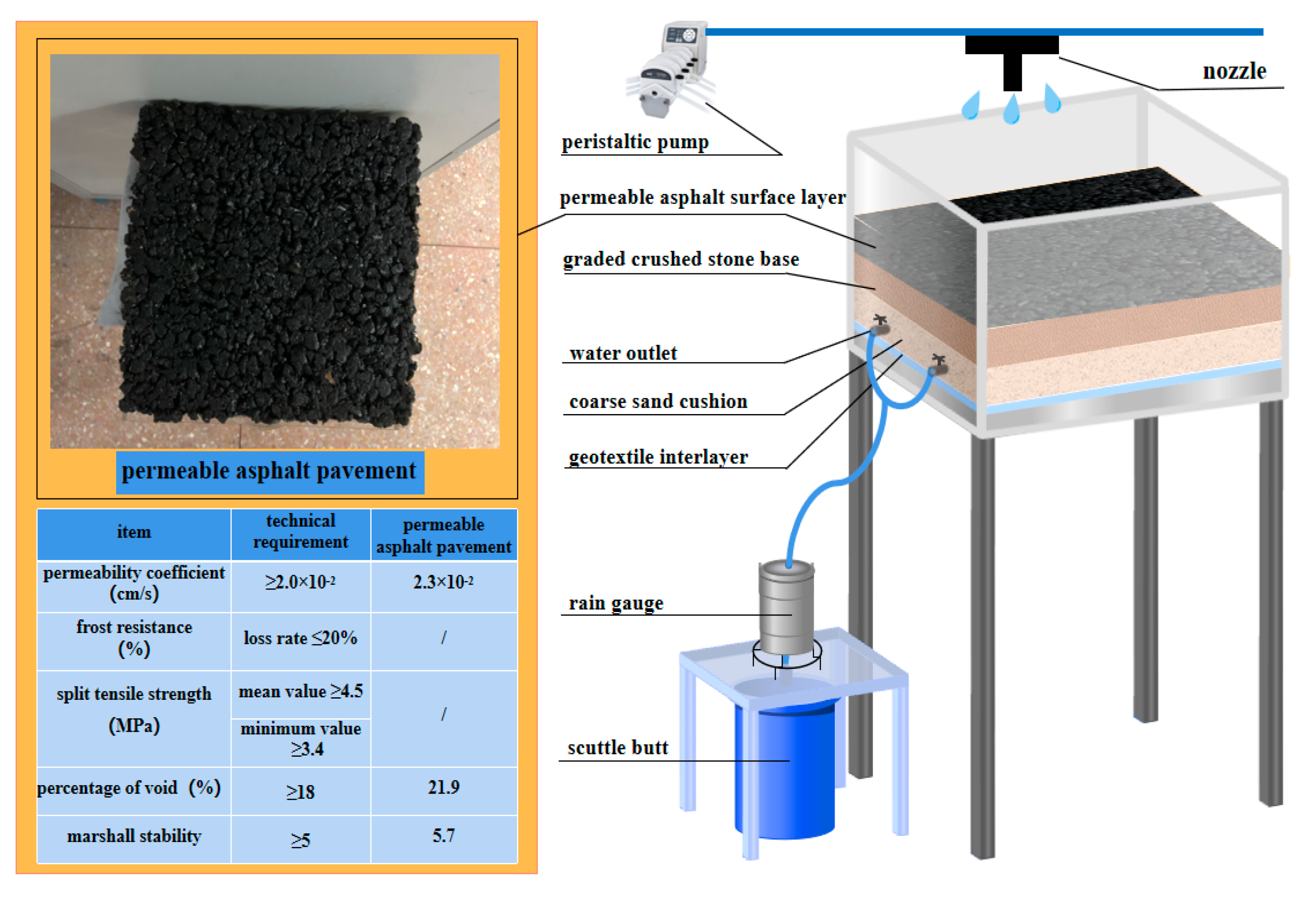
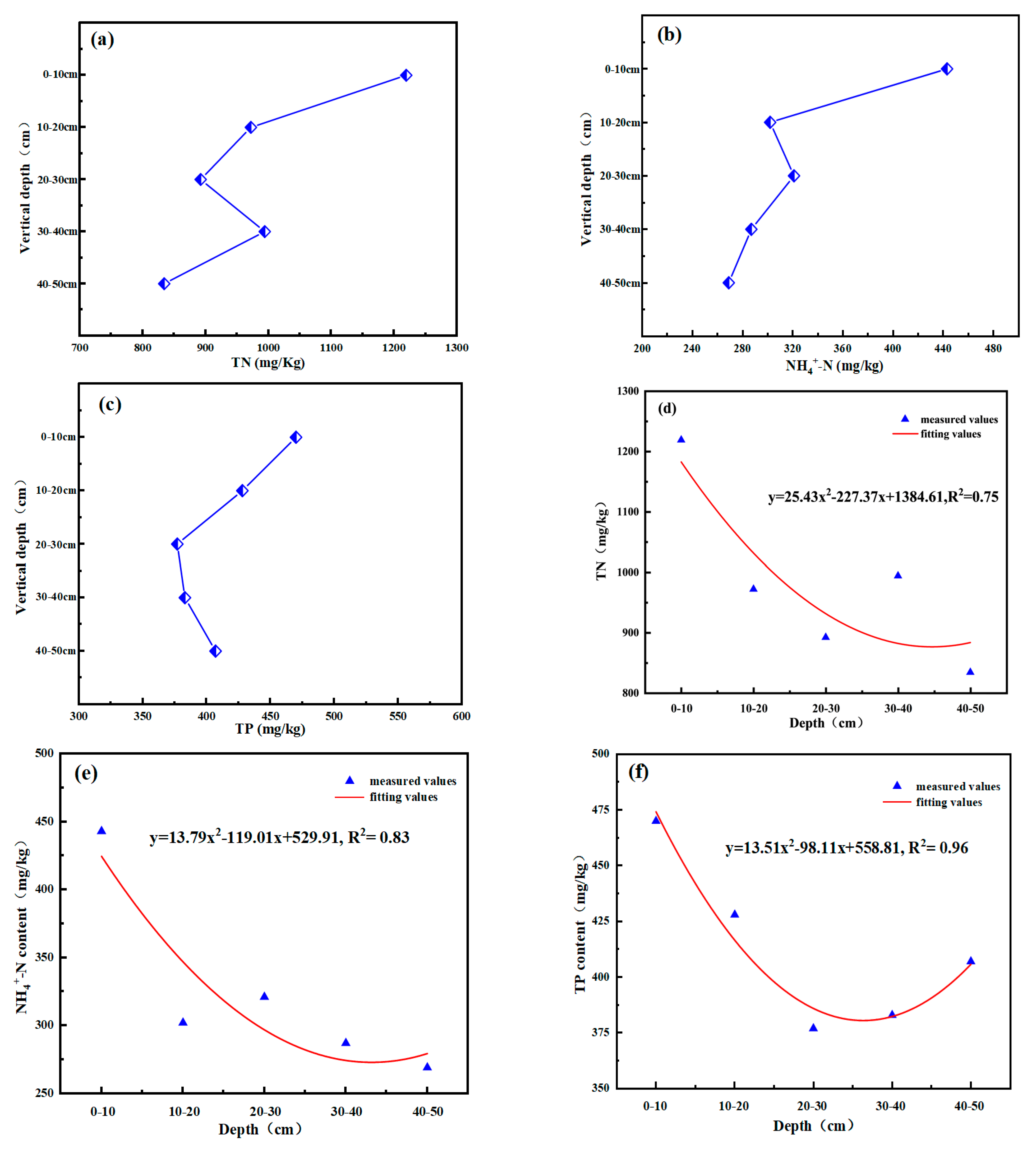

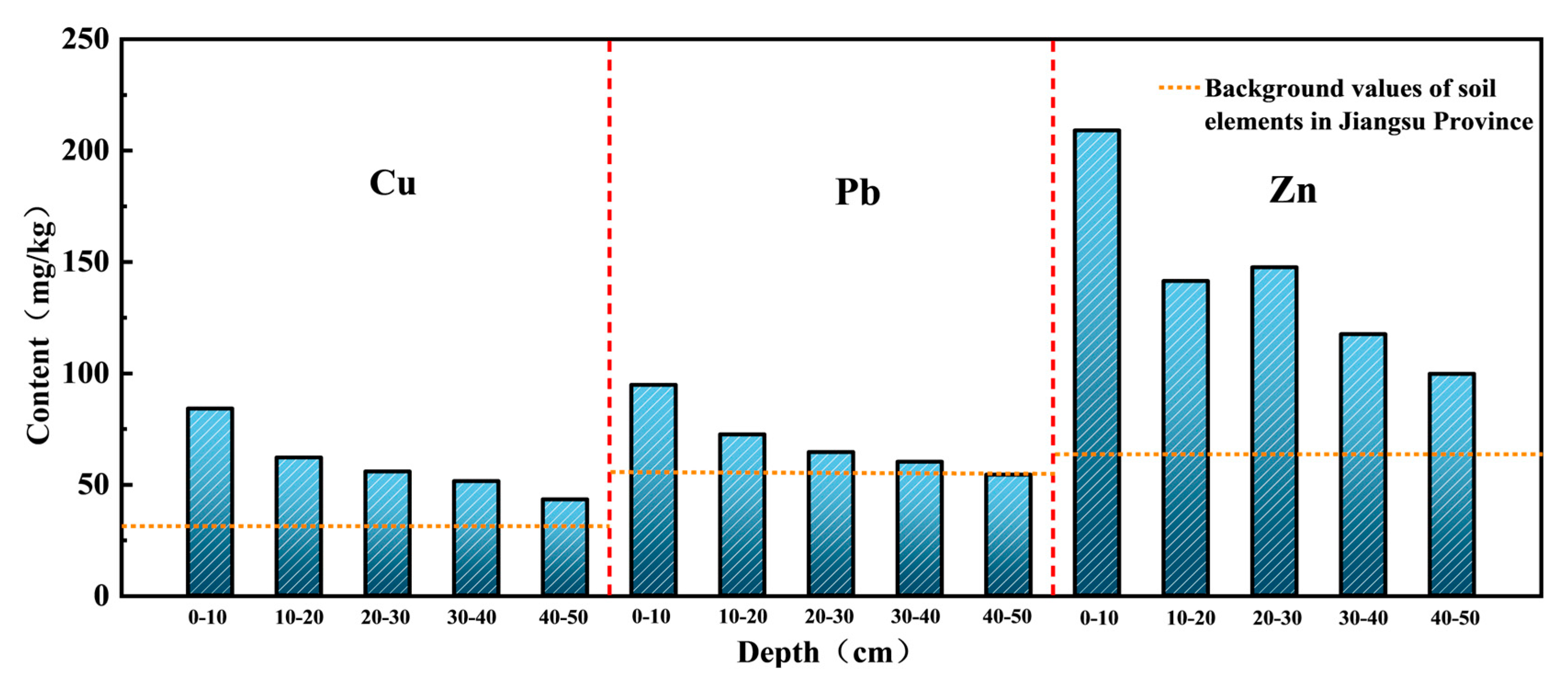


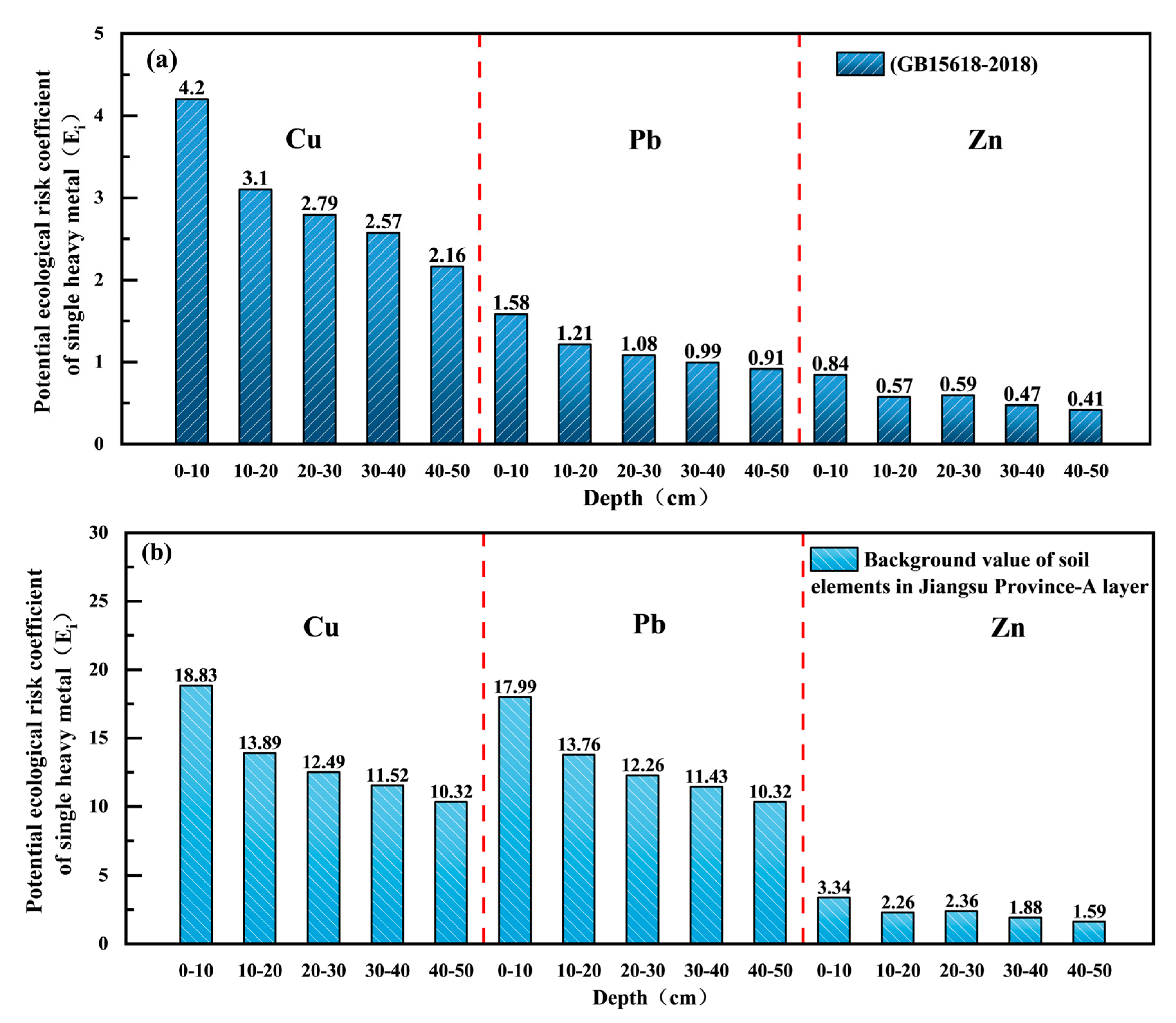
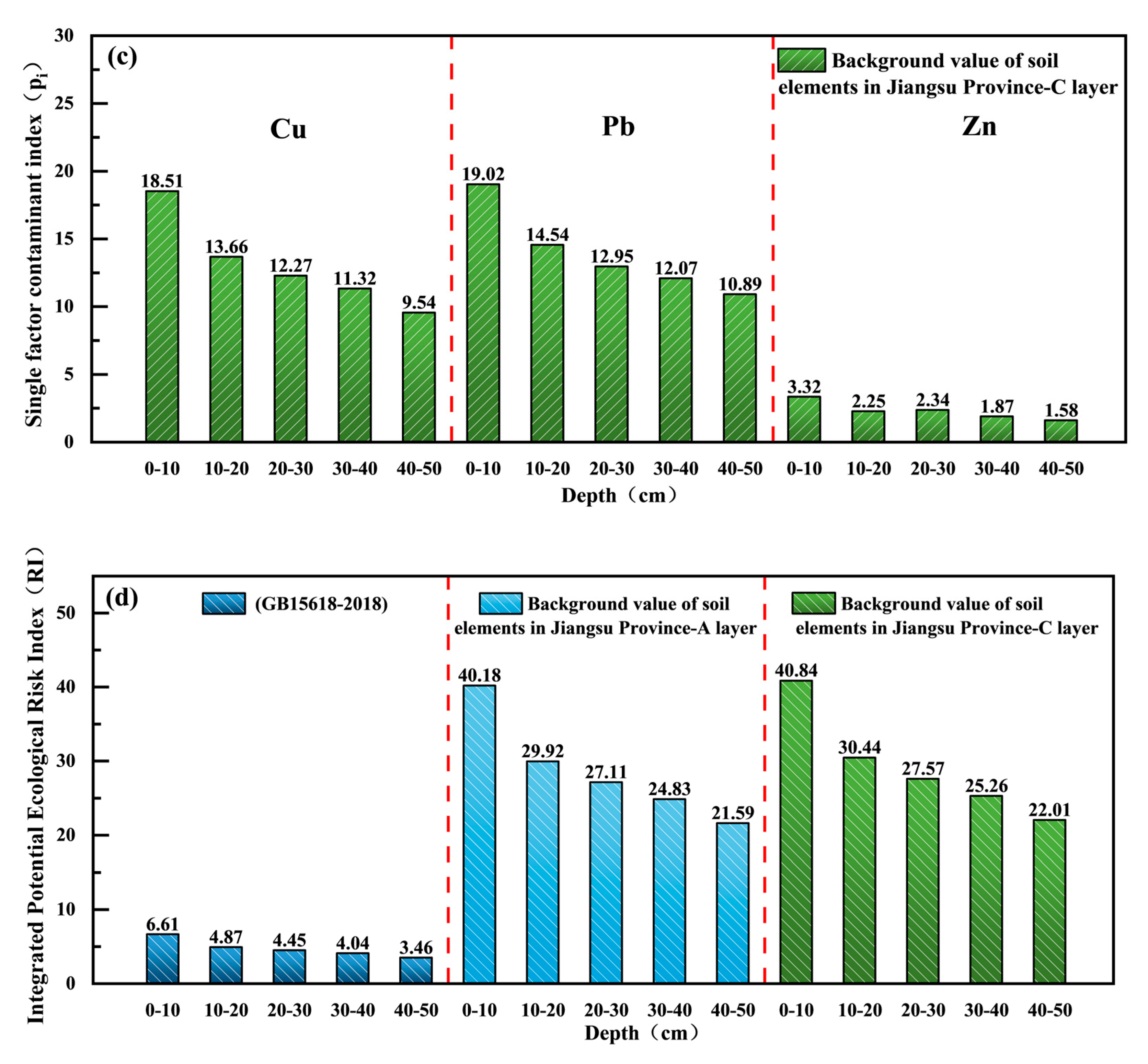
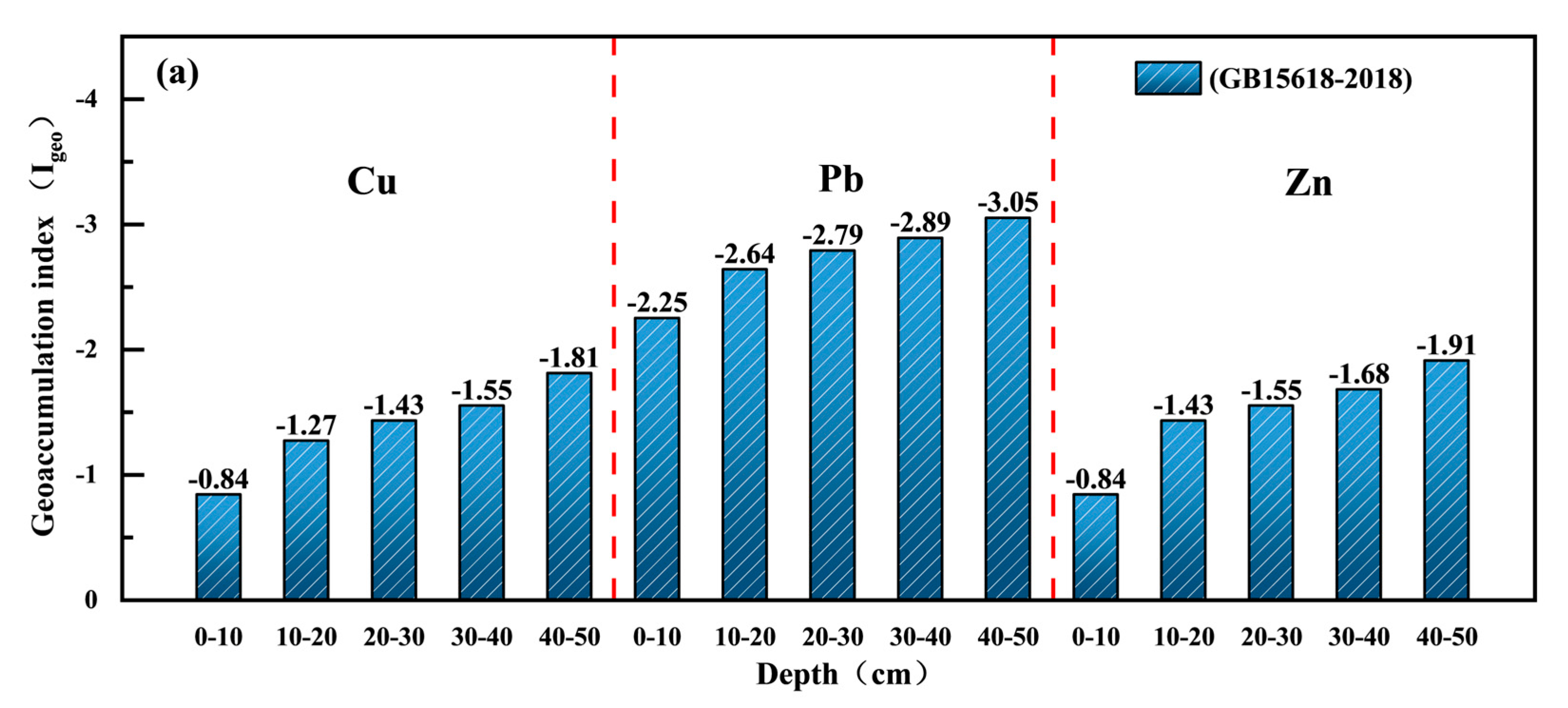
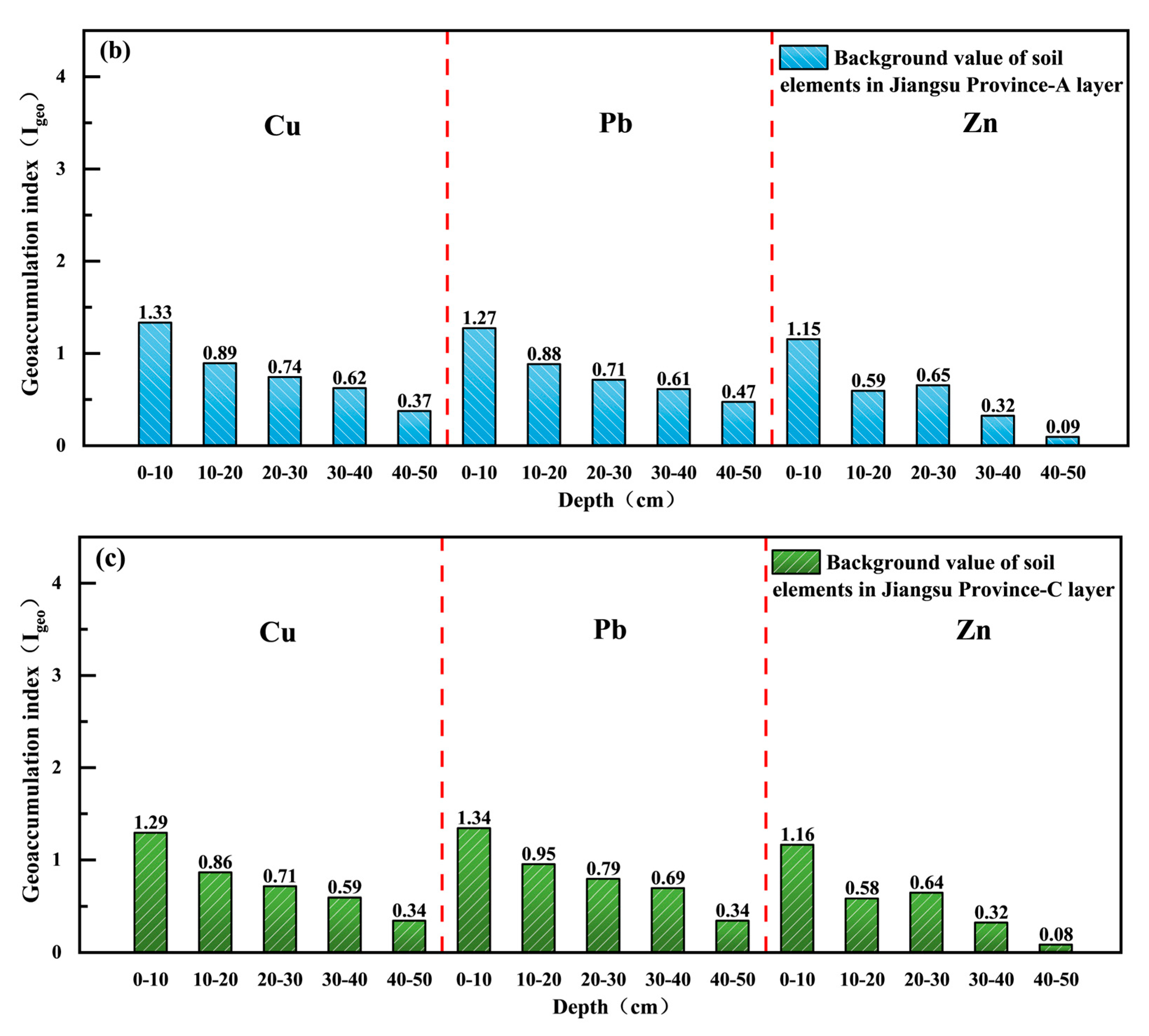
| Type | Material | Working Principle | Common Applications |
|---|---|---|---|
| Porous Asphalt | Similar to conventional asphalt but with a reduced or absent fraction of fine aggregates. | Stormwater infiltrates directly through the porous surface into the underlying stone reservoir. Pollutants are removed through filtration by the asphalt matrix and adsorption within the aggregate layers. | Low-traffic roadways, parking lots. |
| Pervious Concrete | A mixture of Portland cement, uniform-sized coarse aggregate, and water, with little to no fine aggregates. | Water passes through the large, interconnected pores of the concrete surface. The sub-surface layers provide additional filtration, adsorption, and temporary storage before infiltration or collection. | Sidewalks, plazas, low-traffic parking areas. |
| Permeable Interlocking Concrete Pavers | Precast concrete paving units placed on a granular bedding course, with joints filled with small, open-graded aggregates. | Stormwater enters through the permeable joints, then is filtered, treated, and stored by the subsurface layers | Heavy-duty applications like industrial pavements, commercial parking lots. |
| Indicators | TP | TN | NH4+~N | COD | Pb | Zn | Cu | SS |
|---|---|---|---|---|---|---|---|---|
| Experimental solution concentration | 0.71~1.8 | 3.2~8.0 | 1.5~5.5 | 80~200 | 0.1~0.3 | 0.3~0.72 | 0.2~0.86 | 150~550 |
| Base Type | Washing and Filtration Treatment | Initial TN Content (mg/kg) | Initial NH4+ Content (mg/kg) | Initial TP Content (mg/kg) |
|---|---|---|---|---|
| Crushed stone layer | Before processing | 752–786 | 18–23 | 536–557 |
| After processing | 82–89 | 5–13 | 55–63 | |
| sand cushion layer | Before processing | 642–667 | 25–28 | 485–511 |
| After processing | 67–75 | 7–16 | 50–61 |
| Depth (cm) | Organic Matter (g/kg) | pH Value | Particle Size Distribution (%) | ||
|---|---|---|---|---|---|
| Clay (<0.002 mm) | Silt (0.002~0.02 mm) | Sand (0.02~2 mm) | |||
| 0–10 cm | 25.4 | 6.8 | 18.5 | 36.2 | 45.3 |
| 10–20 cm | 22.1 | 6.9 | 17.8 | 35.5 | 46.7 |
| 20–30 cm | 19.3 | 7.0 | 16.9 | 34.8 | 48.3 |
| 30–40 cm | 16.8 | 7.1 | 16.0 | 33.5 | 50.5 |
| 40–50 cm | 15.2 | 7.2 | 15.2 | 32.1 | 52.7 |
| Indicator | Testing Method | Name of Inspection Equipment |
|---|---|---|
| NH4+-N | Indophenol Blue Colorimetric Method | Burette |
| TN | Kjeldahl method | Semi-automatic nitrogen analyser (Producer: Labtron Equipment Ltd., Camberley, UK, Model: LKA-A20) |
| TP | Alkali fusion-molybdenum antimony spectrophotometric method | Dual-beam ultraviolet-visible spectrophotometer (Producer: Puxi General Instrument Co., Ltd., Beijing, China, Model: TU-1810) |
| Cu | Flame Atomic Absorption Spectrophotometry (FAAS) | Atomic Absorption Spectrophotometer (Producer: PerkinElmer, Waltham, MA, USA, Model: PinAAcle 900T) Atomization Type: Air-acetylene flam |
| Pb | ||
| Zn |
| Nemiro Index Method | Geoaccumulation Index Method | Potential Ecological Risk Index Methods | |
|---|---|---|---|
| Math formula | |||
| Parameter definition | Pi represents the single-factor pollution index; Ci represents the measured value of the pollutant, in mg/kg; Si is the standard value of the pollutant at the sampling point, in mg/kg; PI is the comprehensive pollution index, and Pimax is the maximum single-factor pollution index. | Ci represents the measured content of element i in the soil, with the unit of mg/kg; Bi represents the soil background value of element i, also in mg/kg; k is a constant (here k = 1.5 is taken into account the differences in rock background values in different regions), and Igeo represents the geoaccumulation index. | RI is the comprehensive potential ecological risk index of heavy metals; is the toxicity response coefficient of heavy metals at different depths (obtained according to the standardized heavy metal toxicity coefficients formulated by Hakanson); is the pollution coefficient of heavy metal elements; is the measured value of heavy metals; and is the reference value of this element. |
| Features | Considering the comprehensive effects of various pollutants, the maximum value has a great influence on the results. Sometimes, the influence of some factors may be over-emphasized due to individual outliers. | Taking into account the possible changes in background values caused by natural rock formation and human activities. However, it can only evaluate one kind of heavy metal, without considering the contributions of different heavy metals to pollution. | Taking into account the differences in the environmental toxicity of heavy metals and other factors, this reflects the biological toxicity of heavy metals and the proportion of their relative contributions. |
| Assessment Standards | Depth (cm) | Cu (mg/kg) | Pb (mg/kg) | Zn (mg/kg) |
|---|---|---|---|---|
| (GB 15618-2018) | / | 100 | 120 | 250 |
| Background values of soil elements in Jiangsu Province | Layer A | 22.3 ± 8.02 | 26.2 ± 10.92 | 62.6 ± 20.95 |
| Layer C | 22.7 ± 8.02 | 24.9 ± 8.95 | 62.9 ± 18.09 |
| Pollutants | Classification Standards (g/kg) | Proportion (%) | Depth (cm) |
|---|---|---|---|
| TN | I > 2 | 0 | / |
| II ∈ (1.5, 2] | 0 | / | |
| III ∈ (1, 1.5] | 40 | 0~20 | |
| IV ∈ (0.75, 1] | 40 | 20~40 | |
| V ∈ (0.5, 0.75] | 20 | 40~50 | |
| VI ≤ 0.5 | 0 | / | |
| TP | I > 1 | 0 | / |
| II ∈ (0.8, 1] | 0 | / | |
| III ∈ (0.6, 0.8] | 40 | / | |
| IV ∈ (0.4, 0.6] | 40 | 0~20, 40~50 | |
| V ∈ (0.2, 0.4] | 20 | 20~40 | |
| VI ≤ 0.2 | 0 | / |
| Class of Pollution | Pi | Level of Pollutant | PI | Level of Pollutant |
|---|---|---|---|---|
| I | 0~1 | no pollution | 0~0.7 | No pollution |
| II | 1~2 | slight pollution | 0.7~1 | warning line |
| III | 2~3 | moderate pollution | 1~2 | slight pollution |
| IV | 3 | heavy pollution | 2~3 | moderate pollution |
| V | - | - | >3 | heavy pollution |
| Class of Pollution | Potential Hazard Level | Ei Grading | RI Grading |
|---|---|---|---|
| I | slight | <40 | 0~150 |
| II | moderate | 40~80 | 150~300 |
| III | strong | 80~160 | 300~600 |
| IV | stronger | 160~320 | 600~1200 |
| V | very strong | >320 | >1200 |
| Class of Pollution | Geological Accumulation Index | Level of Pollutant |
|---|---|---|
| I | Igeo ≤ 0 | no pollution |
| II | 0 < Igeo ≤ 1 | slight pollution |
| III | 1 < Igeo ≤ 2 | moderate pollution |
| IV | 2 < Igeo ≤ 3 | moderately strong pollution |
| V | 3 < Igeo ≤ 4 | heavy pollution |
| VI | 4 < Igeo ≤ 5 | severe–extremely strong pollution |
| VII | Igeo > 5 | very strong pollution |
Disclaimer/Publisher’s Note: The statements, opinions and data contained in all publications are solely those of the individual author(s) and contributor(s) and not of MDPI and/or the editor(s). MDPI and/or the editor(s) disclaim responsibility for any injury to people or property resulting from any ideas, methods, instructions or products referred to in the content. |
© 2025 by the authors. Licensee MDPI, Basel, Switzerland. This article is an open access article distributed under the terms and conditions of the Creative Commons Attribution (CC BY) license (https://creativecommons.org/licenses/by/4.0/).
Share and Cite
Song, B.; Han, R.; Luo, H.; Wang, H.; Leng, H.; Wu, W.; He, B. Assessment of the Accumulation Characteristics of Pollutants in the Soil of Permeable Pavement and the Risk of Heavy Metal Pollution Based on the Simulated Rainfall Experiment. Appl. Sci. 2025, 15, 11369. https://doi.org/10.3390/app152111369
Song B, Han R, Luo H, Wang H, Leng H, Wu W, He B. Assessment of the Accumulation Characteristics of Pollutants in the Soil of Permeable Pavement and the Risk of Heavy Metal Pollution Based on the Simulated Rainfall Experiment. Applied Sciences. 2025; 15(21):11369. https://doi.org/10.3390/app152111369
Chicago/Turabian StyleSong, Bukai, Rubin Han, Hui Luo, Huiteng Wang, Hongxiu Leng, Wenbo Wu, and Baojie He. 2025. "Assessment of the Accumulation Characteristics of Pollutants in the Soil of Permeable Pavement and the Risk of Heavy Metal Pollution Based on the Simulated Rainfall Experiment" Applied Sciences 15, no. 21: 11369. https://doi.org/10.3390/app152111369
APA StyleSong, B., Han, R., Luo, H., Wang, H., Leng, H., Wu, W., & He, B. (2025). Assessment of the Accumulation Characteristics of Pollutants in the Soil of Permeable Pavement and the Risk of Heavy Metal Pollution Based on the Simulated Rainfall Experiment. Applied Sciences, 15(21), 11369. https://doi.org/10.3390/app152111369








